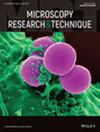Involvement of Programmed Cell Death and Autophagy on Schizogenous Secretory Canal Formation in Angelica dahurica var. formosana Root
Abstract
Schizogenous secretory canal is an important functional structure of Angelica dahurica var. formosana, which is the main part of the accumulation of essential oil, coumarin and other components. The developmental process of secretory tissue and the accumulation of components are closely related. Meanwhile, programmed cell death (PCD) plays an important role in the development of plant secretory tissues, which is usually associated with autophagy. However, there are fewer studies involving PCD and autophagy with the development of schizogenous secretory canal. This study aims to provide new data on the development of schizogenous secretory canal in A. dahurica var. formosana. Light and transmission electron microscopy were used to reveal the cytological characteristics of secretory canal in A. dahurica var. formosana roots at different developmental stages. PCD and autophagy signals during the developmental process were detected using techniques such as terminal deoxynucleotidyl transferase-mediated dUTP nick end-labeling (TUNEL) detection, propidium iodide (PI) staining, and immunofluorescent labeling. The results showed that the walls of secretory cells were intact during the development of schizogenous secretory canal in A. dahurica var. formosana roots. Mature secretory cells showed high vacuolization and accumulated a large number of essential oils. Meanwhile, we also observed significant ultrastructural features of PCD and autophagy during the developmental process. The signal detection results indicated that PCD and autophagy were jointly involved in the development of schizogenous secretory canal in A. dahurica var. formosana roots, and caspase-3-like protease may act as an upstream signal and participate in PCD.





 求助内容:
求助内容: 应助结果提醒方式:
应助结果提醒方式:


